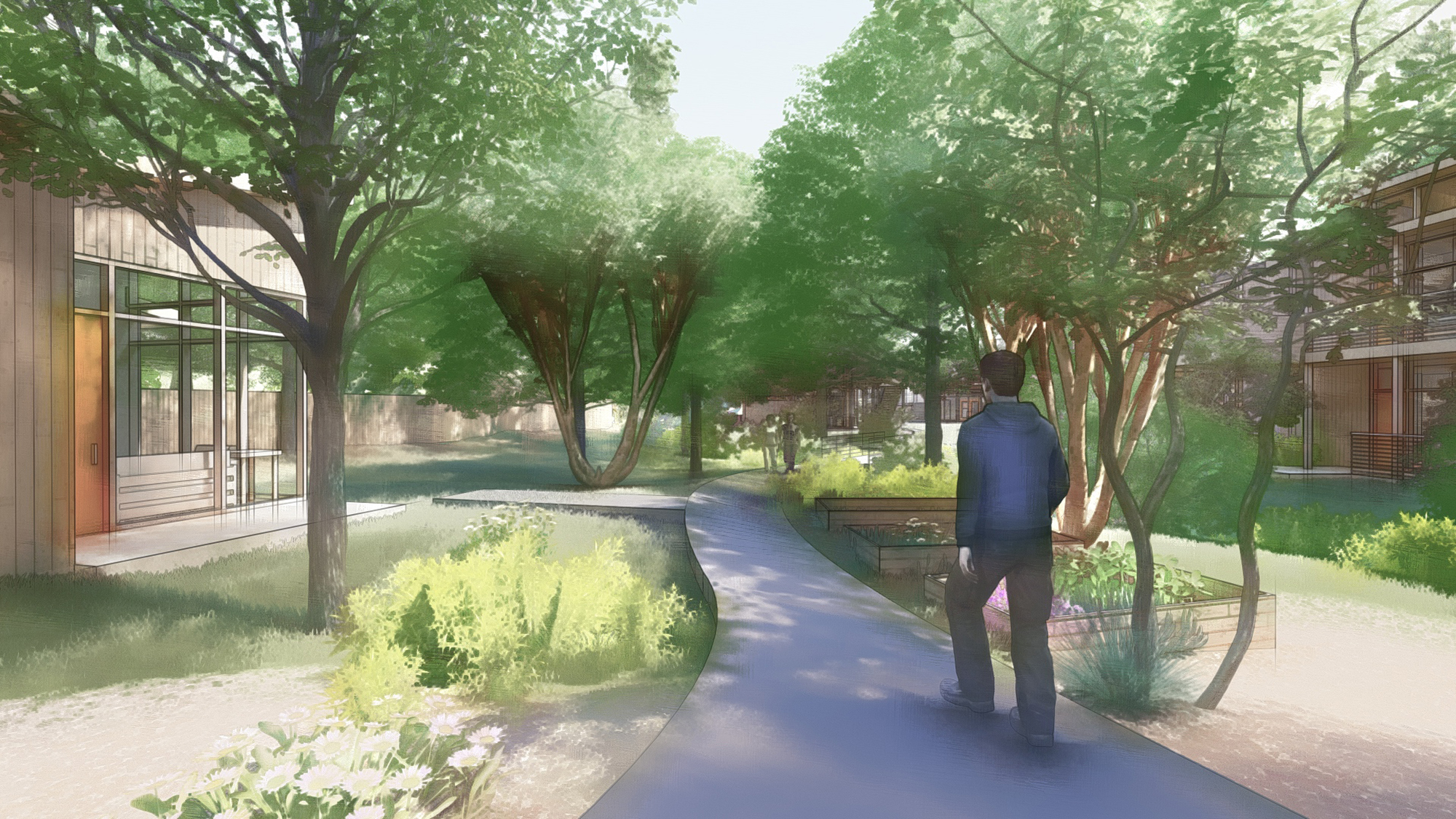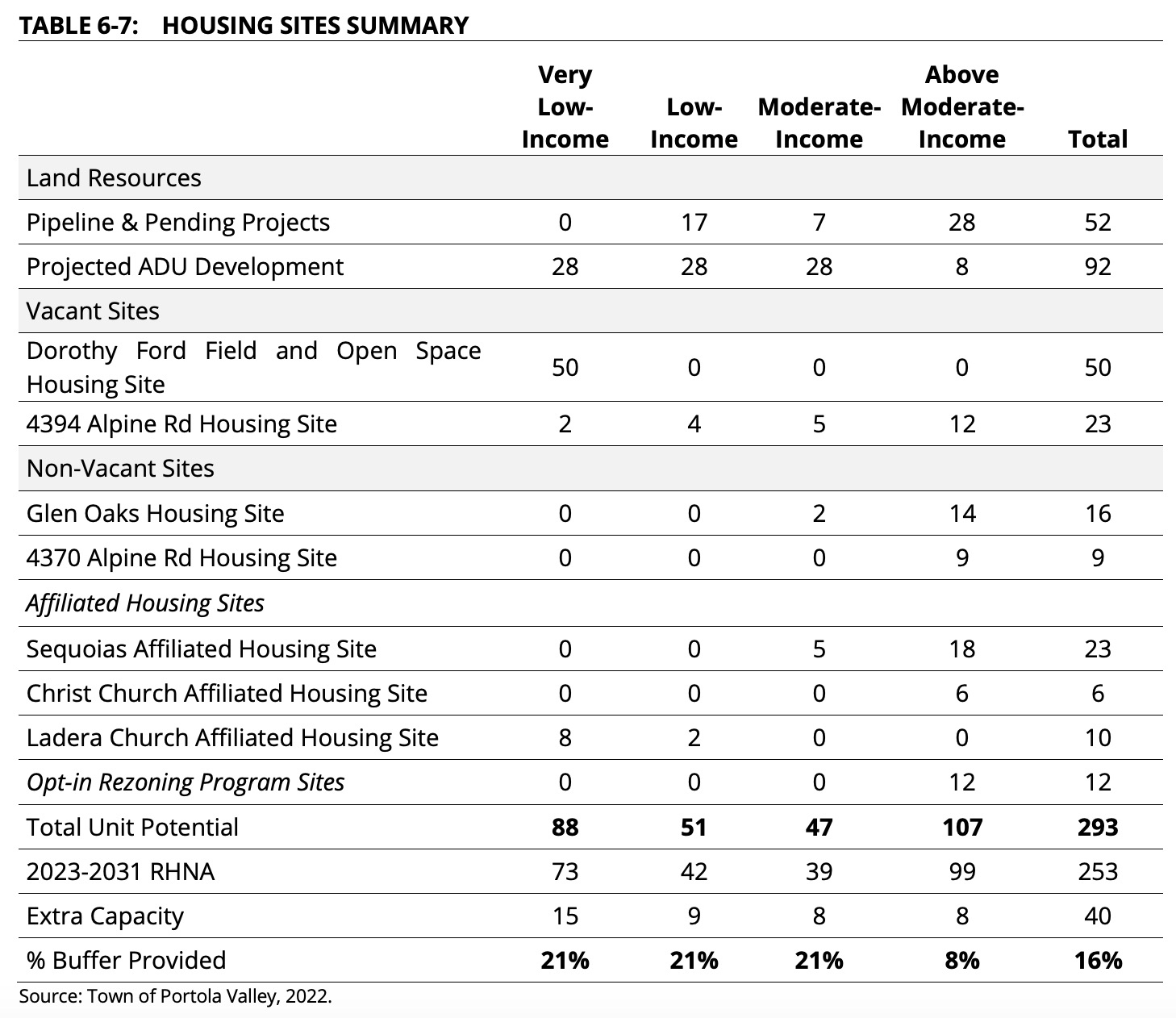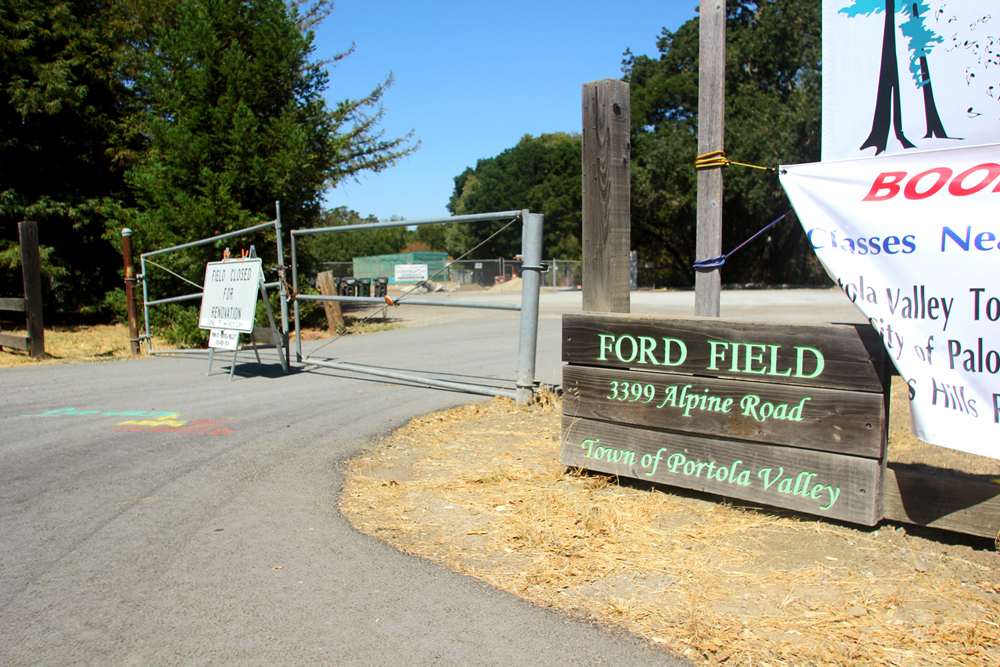There's still work to be done on Portola Valley housing's element, the state told the town last week.
In a nearly 12-page letter on Wednesday, Nov. 9, from the state Department of Housing and Community Development (HCD) asks Portola Valley to justify the number of accessory dwelling units (ADUs), or granny units, that the town expects to be built in the next eight years. Portola Valley is also being pressed to provide more analysis and information on its housing programs in its mandated plans for housing.
The town is assigned to plan for 253 new units that could be built between 2023 and 2031 as part of the 2023-31 Regional Housing Needs Allocation (RHNA). This is a steep increase from the 64 units required during the last RHNA cycle.
"The draft element addresses many statutory requirements; however, revisions will be necessary to comply with State Housing Element Law," the letter states.
No Peninsula city has received the go-ahead on their plans from HCD this cycle. In San Mateo County, Menlo Park, Atherton, Woodside, Belmont, Colma, Foster City, San Bruno and the city of San Mateo have all received feedback from the state on how to help make their plans compliant. Emeryville and Alameda are the lone cities in the Bay Area that have had their plans approved by HCD, according to HCD's website.
Another nearby San Mateo County city, East Palo Alto, which submitted its draft housing element on Oct. 21, hasn't received comments back from the state yet.
A compliant draft of the housing element has to be approved by the town by Jan. 31, 2023.
Without a compliant element, the town could face the so-called builder's remedy in the city, which allows for residential projects to move forward even if they do not comply with local development standards. This occurred in Santa Monica, in which 16 projects and 4,562 units were proposed while the city had a noncompliant housing element, according to the Santa Monica Daily Press.
With the builder’s remedy, cities and towns could be required to approve any project that has 20% of its units designated for affordable or low income households or 100% moderate income households even if the project exceeds the zoning and general plan density requirements, according to a Nov. 10 staff presentation to Portola Valley's Ad Hoc Housing Element Committee.
Town and housing advocate's response to the letter
Planning & Building Director Laura Russell told the Ad Hoc Housing Element Committee that "basically it's good news."
"The way that we read the letter is that the basic structure of our housing element works but we do have things we need to clarify with our review work," she said. "We think there's a lot of work ahead."
Russell noted that the state called Portola Valley's voluntary upzoning program "innovative." She noted that the state was receptive to the town's constraints for building, such as wildfire and earthquake risks (for example, residents have lost their fire insurance because of the risk of wildfire in town).
Mayor Craig Hughes said the town seems to be in better shape than other nearby towns, who are being asked to prove the housing they are planning realistically could be built. After reading the letter, talking to staff and listening to the ad hoc committee, he said he is confident the town will be able to finalize its housing element on schedule.
"It seems like there are no objections to the core policies (in Portola Valley's plan)," Hughes said. "A lot of stuff they're asking for is technical things we overlooked. One or two are providing more support for why we can reach numbers with policies we have. … We look forward to working through the details of necessary changes to the draft with staff, the housing element committee, the planning commission, and ultimately the council, and to welcoming new neighbors into our community over the coming years."
Keith Diggs, a housing elements advocacy manager for YIMBY Law, a group that helps enforce state housing laws, said he thinks Portola Valley is "clear-eyed about the problem they face." He said that housing densities in town are "still way too low."
"Unlike most cities that try to paper over the problem with housing types, they say it's pretty clear they lack a variety of housing types," he said. "They really recognize (in their element) it is hard for people who work in Portola Valley to live there. Staff did a very good job of recognizing the problem and meeting it and trying to address it."
"They seem to understand themselves as single family residential ... and that's why the whole Bay Area is in the mess it's in today," he said. "They're doing something a lot of cities are doing like stuffing lower income allocations into one or two mega projects when what really needs to happen is zoning for density across their entire territory."
East Palo Alto has created one of the best local housing element plans, noted Diggs. For the 2023-31 housing cycle, the city plans for 1,885 units, with 753 of those being affordable to East Palo Alto residents (very low income or low income).
"It's rare to see cities really planning with a 2x buffer," he said. "I think they're addressing the problem."
Areas where work is needed
HCD is asking Portola Valley to evaluate its previous cycle housing element, further analyze its housing needs, resources and constraints, and work on its housing program.
Housing program plans must demonstrate that they will have a beneficial impact within the planning period, according to the state. Programs must include specific actions the local government will take during the planning period; timelines that result in beneficial impacts within the planning period; detailed planning objectives; and identification of responsible agencies and officials.
"Currently, the element identifies programs to encourage and promote affordable housing; however, most of these programs do not appear to facilitate any meaningful change nor address affirmatively furthering fair housing requirements," state officials said.
The letter goes on to say that, given most of the town is a "high resource" community, the housing element update could focus on programs that promote economic and community revitalization, spur construction of diverse housing and combat displacement caused by disasters and other factors.
Among the deficiencies noted, the draft housing element does not include a complete site analysis, meaning the town had not fully established the adequacy of sites and zoning for housing, according to the letter.
The town should include a program to monitor development of sites within the town’s affiliated housing program, the letter states. It should also indicate the residential capacity of the rezoned sites, demonstrating the rezoned sites have a site capacity of at least 16 units, permit rental and owner multifamily development without discretionary review at minimum densities of at least 16 or 20 dwelling units per acre.
The town plans to have a follow up conversation HCD reviewer on what exactly they're seeking with regards to the site inventory and ADUs in the plan. The town may also want to create a backup plan, but it needs to clarify with HCD to make sure this is not the case, Russell noted.
The state would like the town to explain how it plans to build 92 accessory dwelling units over eight years when it only had 20 built from 2018 to 202o.
Next steps
The ad hoc committee will likely meet the week of Nov. 21 to review the plan, pending clarification from HCD on the changes it would like to see around ADUs and sites in the plan. The Planning Commission has a series of meetings planned around reviewing the element: Nov. 30 and Dec. 7, before providing a recommendation to the council during a Dec. 13 meeting. The council would then review the plan in January 2023, potentially over three meetings.
The Planning Commission may soon have some shake ups. Commissioners Judith Hasko and Craig Taylor are the top vote getters so far in the race for three open seats on the Town Council, which plans on rotating in new members at a Dec. 14 meeting.
Watch the Ad Hoc Housing Committee meeting here.
Read the full letter here.





Comments